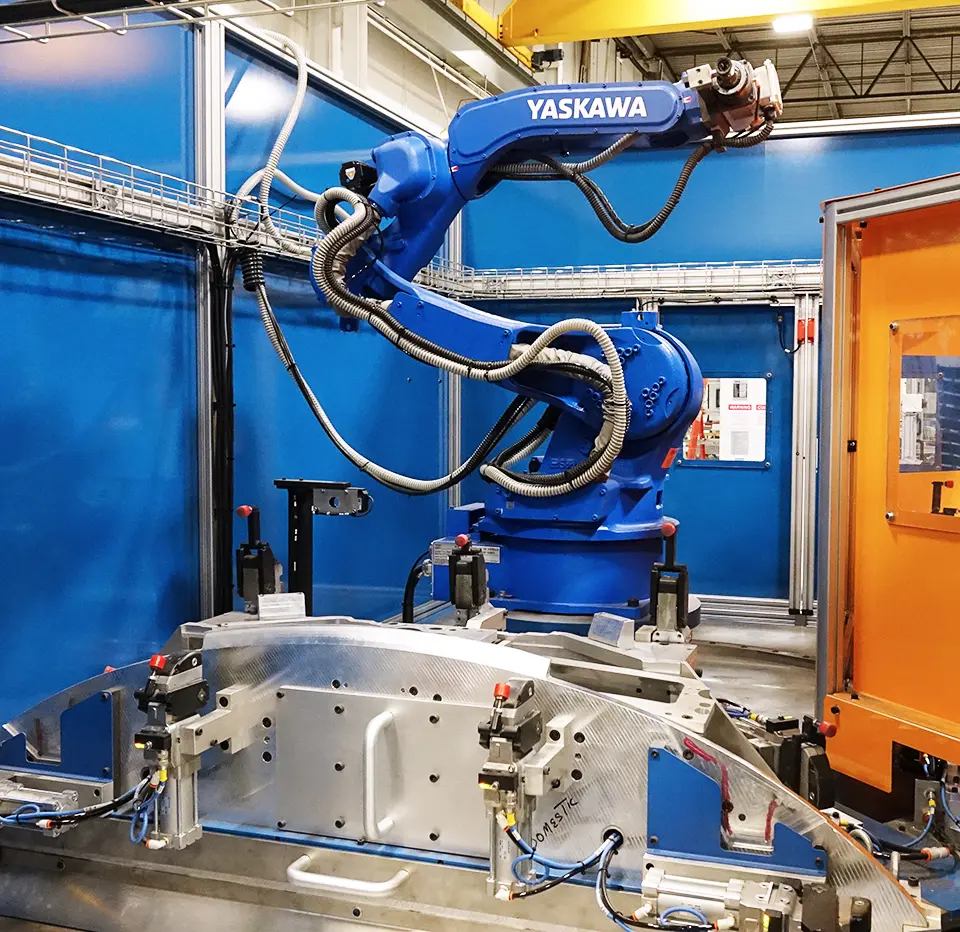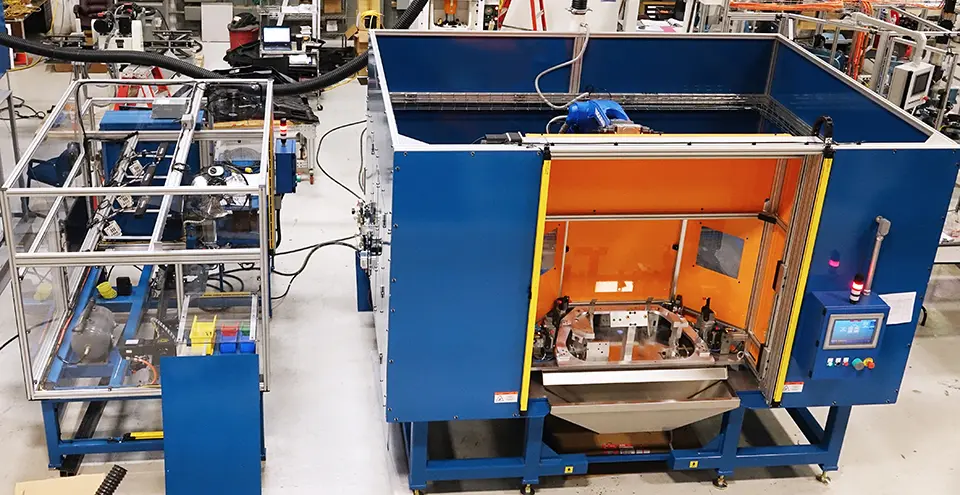Yaskawa Motoman MH-24 Robot with DX200 Controller
Motoman Form Cut Option for routing common shapes
Motoman VFD Feedback Option for spindle motor control
Keyence Vision System with 3 cameras for Inspection Station
Rockwell Kinetix 5500 Servo for rotating fixtures from load to routing stations
Rockwell Kinetix 5500 Servos electronically geared together for part positioning at inspection station
18000 rpm spindle motor with Yaskawa vfd to control router and drill operation
Keyence color sensor for detecting black on black component
Keyence laser micrometer for measuring router bit diameter
Laser part presence detection
IR Temperature sensors for cooling process control
Rockwell Automation Panelview Plus 7 HMI’s included for machine manual control, status, and diagnostic purposes.
Safety Controller used to implement zone control – enabled part to be inserted at load station while robot operated on part at the routing station
Light curtains positioned at operator loading stations for ease of access while maintaining safety requirements during machine operation
I/O link enabled sensor blocks used to simplify sensor and pneumatic valve bank connection on the rotating fixture
Router bit diameter measured periodically and communicated to robot for tool wear compensation enabling holes to stay within spec with a semi-worn router bit



